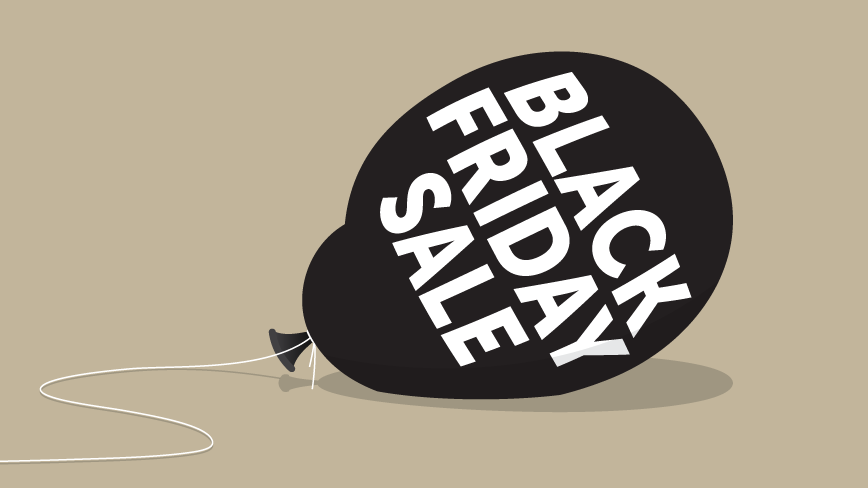The gradual spreading of discount events and the ability to generate hype campaigns at any time of year has decreased Black Friday’s significance.
The infamous shopping day known as Black Friday may have finally reached its peak. While nearly every major retailer still participates, the gradual spreading of discounts throughout the calendar year and the ability to generate buzz has decreased the shopping holiday’s significance.
That’s not to say that Black Friday is going away. But marketers should anticipate a growing emphasis on spreading out discounts or offering a competing sale day as a viable revenue-generating strategy. Notably, the ability for retailers to use online customer relationship nurturing has led to a phenomenon that is quickly exceeding the impact Black Friday once held.
From Black Friday to Black Everything
The first blow to Black Friday as the de facto holiday shopping day came in a narrative surrounding Cyber Monday. Retail experts claimed that, in a counter to physical retail, millions of shoppers took to their computers three days after Black Friday to avoid lines and take advantage of better, more tech-savvy deals. While the concept of Cyber Monday as a major online sales day has since been dispelled as mostly myth thanks to diligent online traffic and sales monitoring, the notion that not everyone was as excited about Black Friday stuck.
In the meantime, negative perceptions of “Black Friday hysteria” and the realization that many of the deals beyond limited “doorbusters” are not even the heaviest discounts of the year, have led many to shun the holiday. More than half of retailers began holiday sale promotions in September and October in 2014, a growth of 14 percent from the year before, shifting sales earlier in the year.
JCPenney, for example, held a “Big Bonus Sale” event on October 16 and 17 that offers deep discounts on par with many Black Friday deals. Amazon is similarly courting earlier retail dollars and starting the Black Friday practice on November 1 in an event they’re calling “Black November.”
Black Prime Day
As a matter of fact, it was Amazon who showed the world that holiday shopping hype can occur at any time of the year, even in the midst of summer. Their first “Prime Day” took a bit of a beating on social media, but the numbers spoke for themselves. Overall, 34.4 million products were ordered globally, trumping their 2014 Black Friday sales by 18 percent.
Not only did this tactic result in many sales, it convinced “hundreds of thousands” of new Prime Members to sign up, giving Amazon clearer access into buyer data revealing preferences and inclinations.
Other brands are looking towards similar data-based relationship building with holiday sale-themed social media promotions and aggressive paid ad spending. As these campaigns generate valuable audience and analytical data, expect segmenting of both demographics and calendar days to get more assertive as retail brands seek to speak to their individual holiday shoppers rather than adding yet one more shouting voice to the Black Friday noise.

